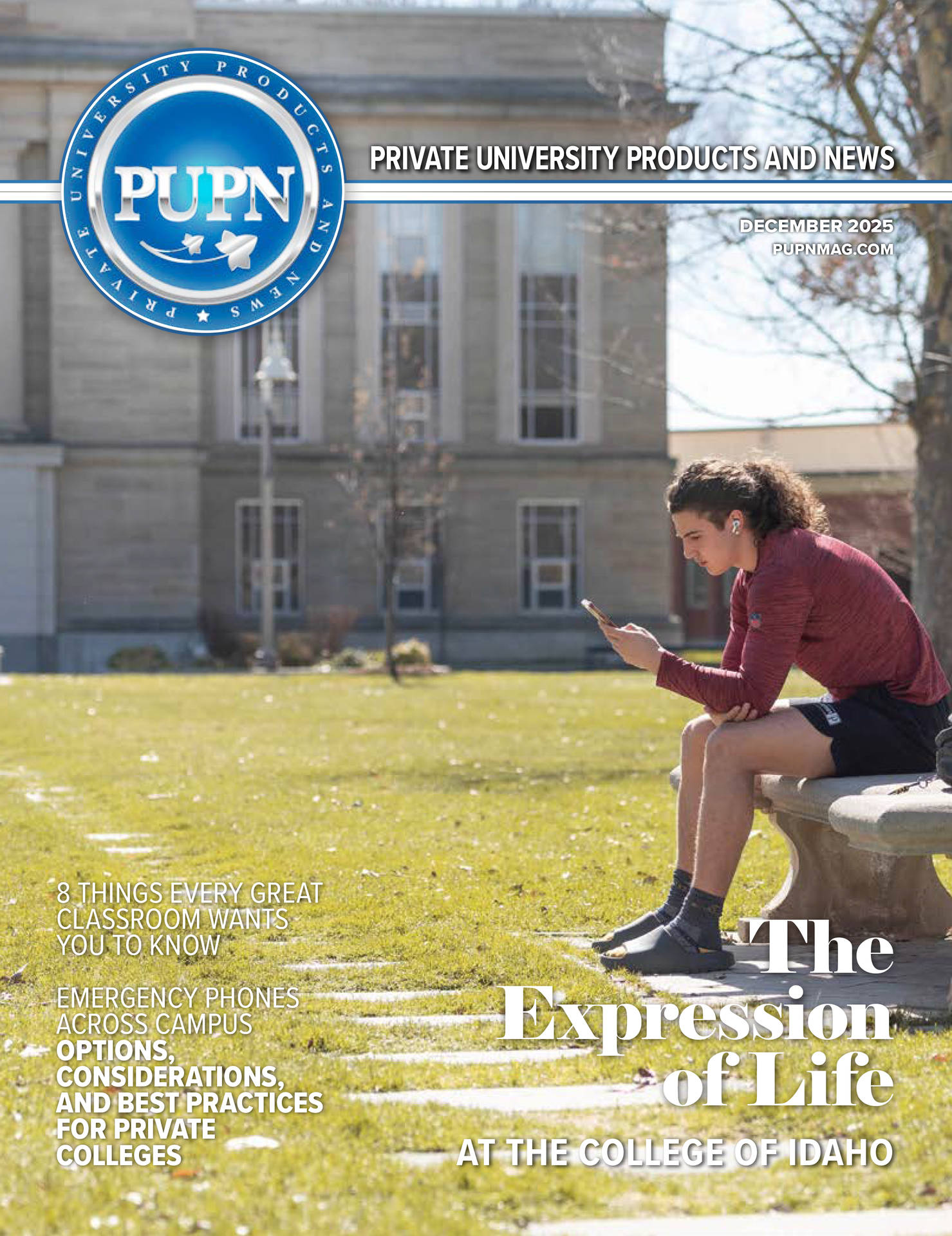Through working with many campus and community partners to develop an array of community-oriented projects, her students are grounded in the discipline of history both by engaging with theory and content as well as by gaining a wide variety of practical skills.
Her work in advancing public-history studies has caught the attention of colleagues and students alike, creating immersive experiences in the field while helping to show students the paths available to them to pursue history as a career. In response to a 2017-18 campus-wide curriculum review, Clark-Wiltz and her colleagues in the history department saw the need to develop a new sequence for majors, beginning with a new, 200-level public history class. While the course is open to general education students, it is now the first class that history majors take, generally in the fall of their sophomore year. Clark-Wiltz developed and taught this class, which serves several purposes: it attracts students to the major, it allows them to feel part of a cohort, and it teaches students skills and approaches that they will use for individual research projects in the remainder of their time at Franklin.
Clark-Wiltz says that the class prepares students in practical ways for the discipline of history, having them create resumes, cover letters, and the like. More crucially, however, students in each iteration of the class take on a community-facing group project with “real world implications,” she states. These projects not only deeply engage students in the material; they also prepare students to apply for internships during their school years and jobs post-graduation. Because of their work in this class, students can demonstrate skills in an impressive array of areas—working with archives, thinking about audience, managing projects, and more.
Lourdes Hurtado, associate professor of history at Franklin, says that students in this class learn about a larger definition of public history—how museums and other public spaces create histories for wider audiences. Each year, the students focus on a different project addressing interests and needs of the community. In 2019, students researched the “Wonder Five”—the 1920-23 basketball team at Franklin. The 2020 class drew on the previous year’s work and completed all of the requirements for a historical marker in Indiana. This marker, now placed outside of the fitness center, was unveiled at a reception event that the class also organized. Hurtado points to additional skills that the students garnered with this project: not only are the students participating in historical research, but they are also learning practical skills that public historians use—creating narratives for the public, curating displays, and organizing events.
Community Collaboration
Over the past nine years, David Pfeiffer, director of the Johnson County Museum of History, has usually co-taught the public history class with Clark-Wiltz. He observes that she has “done a wonderful job of facilitating partnerships,” as “a fierce advocate for students.” As a museum director, he enjoys showing students the options they have in the field of history, and he is glad to see some of their students go into the museum field after graduation. Clark-Wiltz appreciates working with community partners like Pfeiffer. In their co-taught class, she says she provides the professional development and academic grounding, while Pfeiffer “makes sure that the projects are realizable and reaching the right audience.”
Pfeiffer explains that Franklin College has a history spanning almost 200 years, and the public history class helps students understand the resources available throughout that time span. Through interacting with the campus archives, taking class tours, and pursuing internship opportunities, students can see multiple possibilities for career paths in public history. Each cohort has a different experience; some classes have learned the multiple facets of setting up a traveling exhibit and managing its visitors, while others have learned to organize and promote a documentary screening. Each of these experiences can be part of the responsibilities of public historians, Clark-Wiltz states.
Roger D. Branigin, the governor of Indiana from 1965 to 1969, was a Franklin graduate, and his gubernatorial papers are housed at Franklin College in the Honorable Roger Douglas Branigin Archives. In one project, students in the class used papers from the Branigin archives to create a mini exhibit of the governor’s desk, as if he had just walked away for a moment. Pfeiffer says that curating this sort of content makes public history concrete for the students, and it is a great resume builder, as well. In another project, students are working to digitize oral histories that the Johnson County Museum of History has on cassettes. This sort of work is crucial to ensure that the materials are available for future generations—materials must be transferred to current media in order to continue being accessible.
Phil Katz, senior director of projects at the Council of Independent Colleges (CIC), also points to the practical knowledge that students gain through this type of project. He has observed that humanities and the liberal arts are often seen as impractical, but students engaging in the various projects that Clark-Wiltz organizes learn applied skills such as how to digitize, how to work with various software programs for museum and archival work, and how to interact effectively with community partners. Clark-Wiltz says that students participating in such projects feel invested in the work; they have a sense of accomplishment and can point to the end products they each had a hand in producing.
After students complete the public history class, Clark-Wiltz works to connect them with internship opportunities in their junior and senior years; many of these internships are offered by the community partners with whom she often collaborates. Noah Dahlquist, publications coordinator at the Indiana Basketball Hall of Fame and 2019 graduate of Franklin, explains that he was actively looking for a college where he could pursue museum studies as an entering first-year student. When he toured Franklin, Clark-Wiltz told him about the various museum internship opportunities he could pursue. He says that she was the first person at any college who told him his goal was possible. He recalls completing a work-study research assignment under her guidance in which he was hired to gather information about a Franklin graduate who had died in the Battle of Midway. He then presented the information at the ceremony during which a bench was placed on campus in honor of the deceased.
Dahlquist remembers all of Clark-Wiltz’ classes as being “super interesting,” and he appreciates the connections that she helps students to make with internships and graduate programs such as the one he attended in public history at Indiana University–Purdue University Indianapolis (IUPUI). Dahlquist states that Clark-Wiltz focuses on giving her students every opportunity possible to help them succeed—and she continues to cheer them on after graduation. Growing up, Dahlquist dreamed of employment at his present workplace, and he credits Franklin College and Clark-Wiltz for helping him achieve this dream. “She gave me confidence that I could work in museums—and now I do,” he says.
Council of Independent Colleges Grants
Clark-Wiltz secures grants to fund many of the projects she leads. Katz affirms that the CIC “is thrilled” to have made two Human Research for the Public Good grants to fund public-facing humanities projects at Franklin College. He says these competitive grants allow researchers to share the resources of small colleges more widely; they are asked to connect collections, undergraduate research, and public-facing activities while focusing on an issue of interest or concern to the community.
The first CIC grant covered mentoring for two students throughout the 2019-20 academic year, with Clark-Wiltz providing expertise in public history and Jessica Mahoney, director of library services and assessment, supplying expertise in information literacy and research. Mahoney explains that the students learned how to navigate the archive and connect bits of information, both between documents and with other available literature. One of the students was a history and English major, and the other was majoring in history and elementary education, with the goal of becoming a teacher.
Mahoney says that the team actively sought ways to make the emerging project cross-disciplinary. They decided to use the primary sources they were uncovering to create a lesson plan teaching fourth and fifth grade students about Indiana history. To develop the lesson plans, the students needed to become familiar with state core curriculum standards. They also needed to learn about digitization and how to provide access. Mahoney says she helped with the documents, preservation, and access, while Clark-Wiltz brought in a professor of education to consult on the lesson plans and ensure they were meeting the stated learning objectives.
Clark-Wiltz also knew that the Indiana Historical Society housed a project called “Destination Indiana”—a series of online digital journeys. When the researchers learned that there was only one journey for Johnson County, Clark-Wiltz asked, “Why don’t we make it our goal to double that collection?” To voice the online lesson, Clark-Wiltz asked journalism professor Joel Cramer to identify a journalism student who could benefit from the opportunity to do this narration. Mahoney marvels at the way this project kept expanding into multiple disciplines through Clark-Wiltz’s vision and connections.
In 2022, the CIC invited Franklin to expand the Branigin project. Clark-Wiltz and Mahoney decided that this grant would provide the opportunity to delve into primary sources that had not yet been catalogued. The project grew into the new digital collection, Lasting Legacies: Franklin College “Spirit of Community,” which “houses primary sources celebrating Franklin College legacies,” according to the digital collections’ website. The students involved in this project were able to work with professional, high-tech equipment at the Indiana Historical Society, and they recently shared their research at the National Conference on Undergraduate Research (NCUR). Katz says that what they were able to achieve with the grants is “impressive,” and the outcomes—such as the presentations at NCUR—are “tangible and ongoing.”
Clark-Wiltz augmented this work with a Community-Engaged Alliance grant through which students completed oral histories that were used in the collection. Mahoney points out that Clark-Wiltz has a unique way of “seeing possibilities and bringing resources into alignment.” Franklin’s Center for Tech Innovation added a recording lab, and Clark-Wiltz saw the opportunity to have her students learn how to use this resource to gain another skill for working in digital humanities. Clark-Wiltz explains that the students also had to think through the size of the files they collected, considering library storage capacity. Additionally, they learned how to use current transcription technology. In these ways, Clark-Wiltz says, they are learning logistics along with the academic ideas.
As Mahoney explains, this project has been a springboard for other initiatives on campus. For example, Robert Wise—director of “The Sound of Music” and “West Side Story”—is one of the featured legacies. The people who presented at NCUR took a picture of his star on the Walk of Fame to add to his collection. Mahoney reports that the library has done another project extending this work, and the art department created a mural inspired by the collection. There’s now an idea that augmented reality could be added to the mural—possibly snippets from the corresponding oral histories. “You never know what will emerge when you make connections across campus,” Mahoney says. “One project can lead in many directions.”
For her part, Clark-Wiltz feels lucky that Franklin College provides a space that encourages and expects engaged learning, allows for innovation, and encourages risk-taking. She also appreciates that the college will find resources to provide meaningful learning opportunities for students, such as the NCUR trip. She is glad to participate in such significant work, and she says she gets as much out of it as the students do.
As Hurtado points out, there is a lot of value in investing money in the kinds of high-impact learning activities that Clark-Wiltz realizes with her students. For students of limited means, such investments can “help widen opportunities for professional development.” Clark-Wiltz, Hurtado says, “creates serious opportunities,” and her approaches “have students engaged and passionate about history.”










